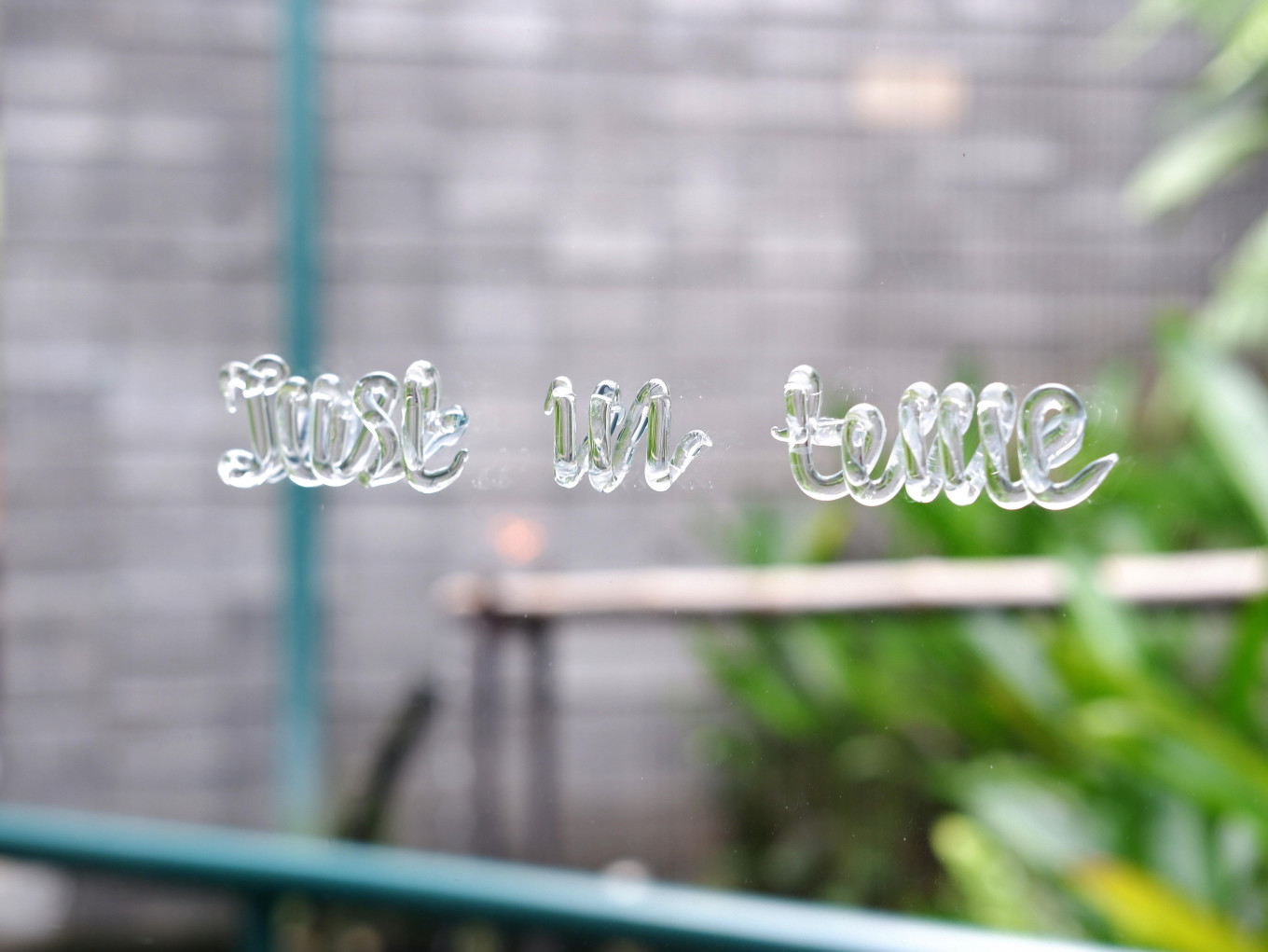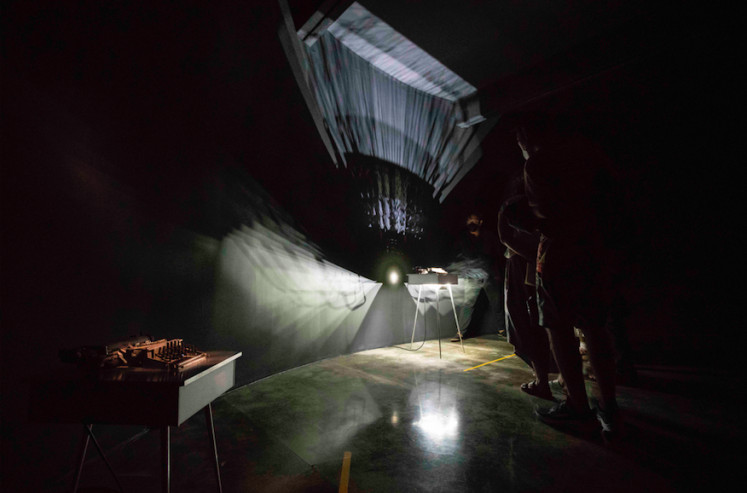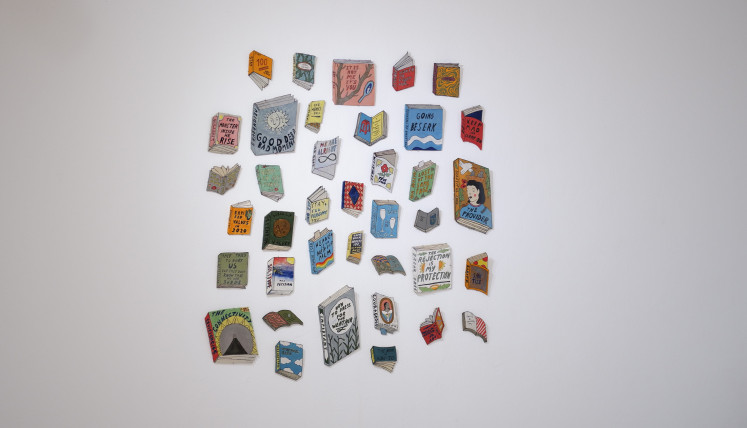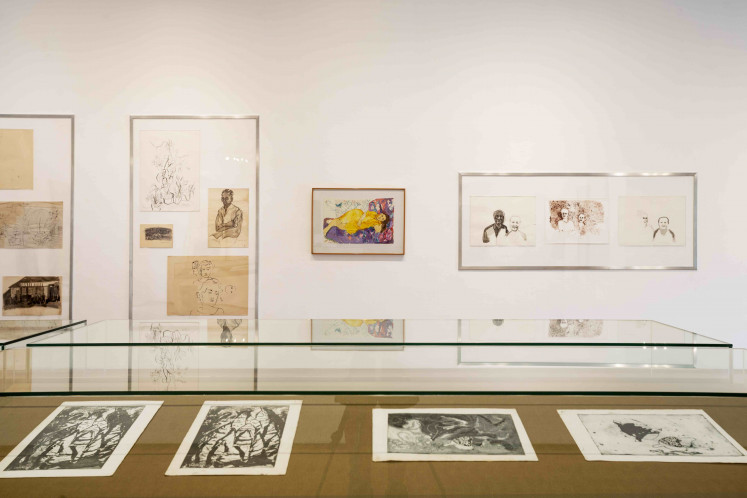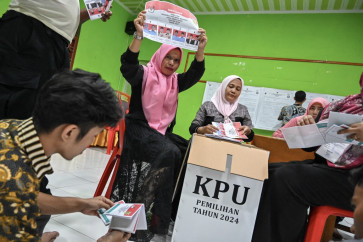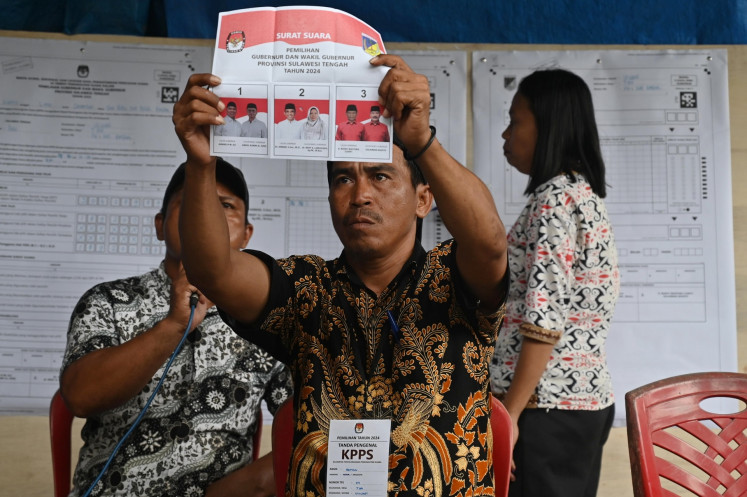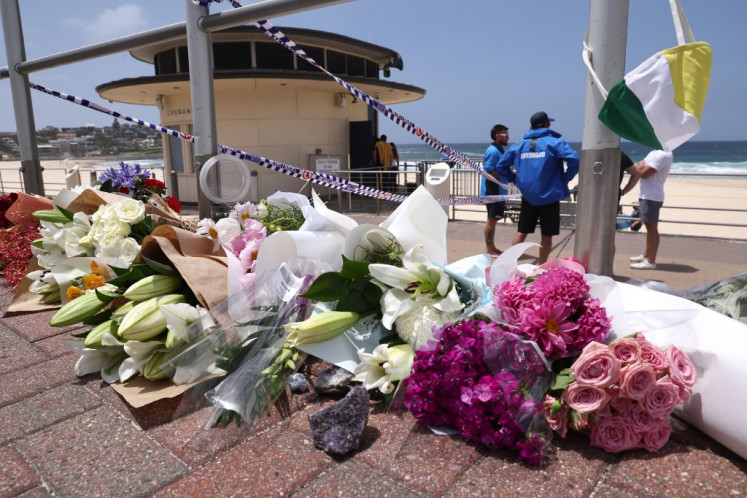Popular Reads
Top Results
Can't find what you're looking for?
View all search resultsPopular Reads
Top Results
Can't find what you're looking for?
View all search resultsBandung long-standing art space introduces annual women artists exhibition
Change text size
Gift Premium Articles
to Anyone
B
andung’s Selasar Sunaryo Art Space’s annual collaborative exhibition titled Titicara offers an expansive discourse on methods through the eyes of women.
On Aug. 13, Selasar Sunaryo Art Space (SSAS), along with Jakarta art gallery ISA Art and Design, opened their flagship annual women artists exhibition, Titicara. Aptly named by its initiator-cum-selector, Bandung-based artist Syagini Ratna Wulan, the exhibition is based on a slightly more constrained sense of method, placing its focus more on materials and their treatments.
Despite its seemingly attenuating context, the collaborative exhibition delivers a delightful maelstrom of works from an encompassing lineup of 23 women artists hailing from Indonesia, Japan, the Philippines, Australia and Singapore—its Jakarta exhibition, held from April to June 2022, included 17 artists from the current lineup.
Finding the light: Ay Tjoe Christine modifies her typewriters series, 'Two Sentences' (2010), for Titicara exhibition—in which she adds a new video, according to founder of ISA Art and Design Deborah Iskandar. (Courtesy of Selasar Sunaryo Art Space) (Courtesy of Selasar Sunaryo Art Space/Courtesy of Selasar Sunaryo Art Space)On feminine authority
“It began with Deborah’s suggestion,” said Syagini regarding how the idea for the exhibition started. Syagini was referring to Deborah Iskandar, the founder of ISA Art and Design.
“I think we should make a women's show. You should curate something,” Syagini imitated Deborah. “But I needed to find a reason first,” she added.
The reason, as phrased by Syagini, then came after she read through a particular book: Women in Abstraction (2021).
“It hit me quite hard,” Syagini said regarding the book before she paused for a moment. “Well, I’m not a feminist, but I support feminism.”
The book mentioned a number of artists that were rendered invisible along the history of the art world. “Like how women artists actually invented abstract art during the 19th century, while according to the history of modern art, abstract art just started to emerge during the 1920s.”
“Were there any artists who were rendered invisible because they were someone’s wife, or whether they intentionally kept themselves apart from the men’s world?” Syagini recalled her thoughts back then.
Building more on the idea, she reflected back to her career as an artist and her works, which, according to her, are more on the masculine side.
“I competed with men, and the materials that I used were also masculine. I was not preserving my feminine authority at all.
“In Titicara, I am highlighting artists who possess something that I’m lacking.”
A cluster of idioms: Pictured is Sekarputri Sidhiawati's 'New Age of Tenderness' (2022), which features her elegantly-snarky life commentary. (JP/Anindito Ariwandono) (JP/Anindito Ariwandono)Tangled in voices
Titicara, considering its expansive approach on selecting its lineup, at times, may feel like controlled chaos, delivering momentary shocks intermittently as one goes through the entirety of the exhibited artwork. From the hiding-in-plain-sight work of Patricia Untario—a set of shaped glass, lettered “just in time”, titled “Journey #3: Just In Time” (2022)—to Ay Tjoe Christine’s seemingly morose-toned engulfed-within-darkness “Two Sentences” (2010) that turned out to be positively enthralling in a theological way.
One of the corners of Ruang B (B room located on the lower level) was meticulously set to resemble a museum, with a depiction of a haloed Bastet sitting in the middle, on top of a stone plinth as its pedestal (“Felis Lybica”, 2022, by Kinez Riza).
“They’re experimenting on different materials to get their concept and ideas across. [...] It’s all about exploring the world of women artists and the materials that they choose in creating their craft,” Deborah said regarding the diverse array of exhibits at Titicara.
“You will see a lot of different mediums, a lot of different ideas. There is no theme. A lot of shows might be curated to have a theme, like the environment, for instance, but there’s no theme to [Titicara]. So that’s what I think makes the show very interesting, because every artist speaks for themselves.”
Occupying almost every known space at SSAS (even the amphitheater houses hulking, branching tendrils made from old metal pipes), a work by Mira Rizki, titled “Detik Mengerik” (2022), the exhibition spares only half of the Ruang A (A Room located on the ground level), which still exhibits the work of the art space’s founder, Sunaryo.
Heru Hikayat, the SSAS in-house curator, noted that no particular basis was used on the arrangements of the artwork.
However, due to the massive number of artworks by two senior artists from the lineup, Chairin “Rini” Hayati Joedawinata and Erna Garnasih Pirous, Ruang A is dedicated entirely to the two artists—even requiring a periodical rotation to give a complete picture of the artists’ body of work. Both of the artists’ works that are exhibited in Titicara are curated by Heru.
Traversing time: A closer look into Chairin Hayati Joedawinata and Erna Garnasih Pirous' artistic career and their relationship with each other. (Courtesy of Selasar Sunaryo Art Space) (Courtesy of Selasar Sunaryo Art Space/Courtesy of Selasar Sunaryo Art Space)Tête-à-tête
“If you go upstairs, there’s Ibu [Mother] Erna and Ibu Rini. Two of the most senior, living female artists,” Deborah noted.
Decades-worth of artwork by both artists dating back to the 1960s are exhibited at Ruang A.
“If you look at their work and the relationship between these two women supporting each other in the 1960s—they were painting each other, they were painting each other’s husbands, their own husbands—that’s very interesting.”
“We intentionally include study pieces from the artists as well,” said Heru as he guided the visitors inside Ruang A. “Ibu Erna liked to draw her friends. Here’s one where she drew Ibu Heyi Ma’mun [a senior artist who passed away in 2019].”
One of the drawings depicted Toko Cairo, a historic shop in Bandung located on Jl. Mangga. Next to them were a set of drawings by Rini, which also showed depictions of each other, some of them with their husbands.
“These works here are actually bonuses. We came across them during the last days [of preparation],” Heru moved, then pointed onto a set of drawings on the adjacent wall.
“These were the works of Ibu Rini’s mother. [The drawings] were intended as birthday gifts for her children, son-in-law, and her grandchildren.”
One of the drawings had a note: “For my eldest son-in-law”.
“She was a French language teacher,” Heru said regarding Rini’s mother’s background. Another, slightly larger drawing next to the set showed a depiction of Rini’s mother. “This one was drawn by Ibu Rini.”
The room had an inherent sentimental feeling to it, with both of the artists’ artworks resonating toward each other. “Ibu Erna and Ibu Rini are good friends,” Deborah noted.
“Arin [Syagini’s husband and Sunaryo’s eldest son] and I cried when we were selecting the artwork,” reminisced Syagini.
Rini, who can still write, but is now paralyzed and unable to speak, wrote a note during their visit to her residence: “Thank you for visiting me”.
Titicara exhibition is open from Aug. 13 to Oct. 30, at Selasar Sunaryo Art Space, Bandung.
It features artworks from 23 artists, such as Aurora Arazzi, Ay Tjoe Christine and Chairin Hayati Joedawinata, as well as Corinne de San Jose from the Philippines and Dawn Ng from Singapore.
For more information, log on to its website, selasarsunaryo.com.

